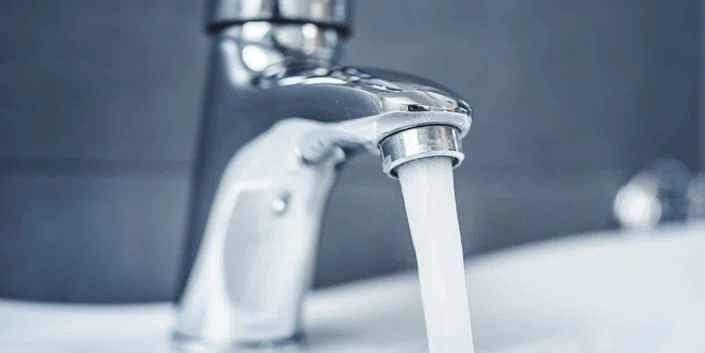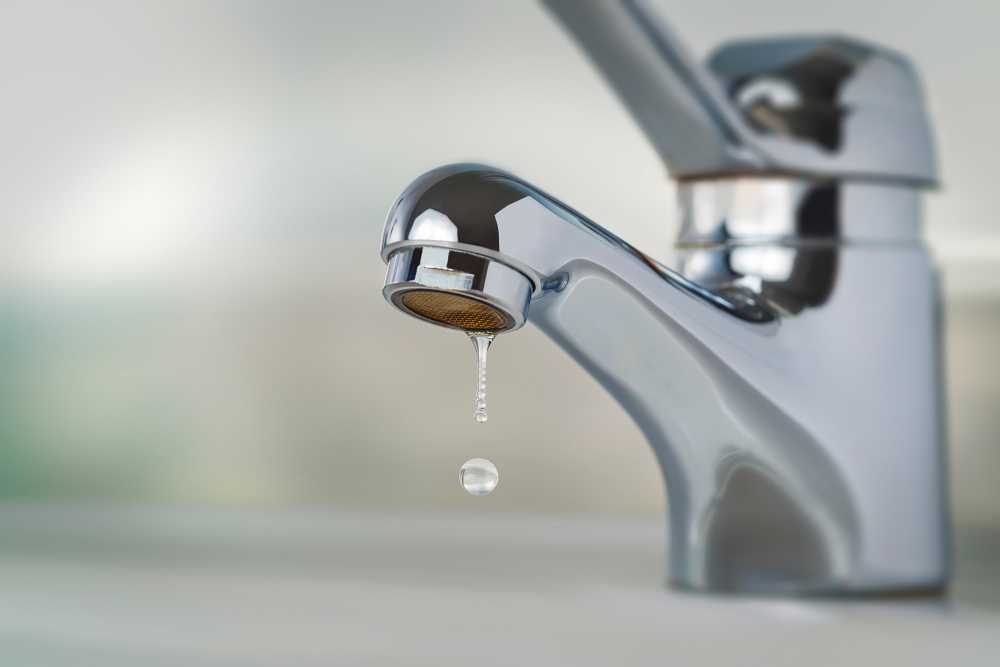Exploring the Effects of Constant Faulty
Exploring the Effects of Constant Faulty
Blog Article
Here down the page you can locate more wonderful information and facts in relation to Potential Health Risks Associated With Leaky Faucets.

Introduction
A leaky faucet might seem like a minor annoyance, yet its effects expand much beyond the occasional drip. Comprehending the impacts of a leaky tap is critical for both property owners and the environment. In this write-up, we'll explore the various impacts of this usual household problem and why addressing it immediately is important.
Causes of Leaky Faucets
Leaky taps can result from a variety of factors, including damage, high water stress, and rust. In time, the constant use taps can lead to damaged seals and gaskets, creating leaks to establish. Additionally, extreme water stress can put pressure on plumbing components, resulting in leaks. Deterioration and corrosion can additionally deteriorate tap elements, making them susceptible to leakage.
Water Wastefulness
One of one of the most significant effects of a leaky tap is water wastefulness. Even a small drip can add up to gallons of drainage with time. This not only drives up water bills however also adds to water shortage and ecological deterioration. Dealing with dripping taps without delay is vital for conserving this priceless source and decreasing its effect on the world.
Financial Effect
Along with wasting water, leaky taps can additionally have a substantial economic influence. Increased water expenses are a direct repercussion of water waste, costing home owners numerous bucks annually. Additionally, the cost of fixing water damage triggered by leaks can be considerable, particularly if left unattended for a prolonged period.
Ecological Effect
The environmental influence of leaky taps prolongs past water wastage. By conserving water, house owners can add to wider efforts to reduce water deficiency and secure natural environments. Sustainable alternatives such as rain harvesting and water-efficient fixtures can further lower the ecological footprint of household water usage.
Technical Solutions
Advancements in modern technology have caused the advancement of wise faucets and water-saving devices that assist decrease water waste. Smart faucets make use of sensing units to discover movement and change water circulation appropriately, decreasing waste without sacrificing benefit. Water-saving gadgets such as aerators and low-flow showerheads are additionally effective in preserving water without compromising performance.
Global Viewpoints
While dripping faucets might look like a local concern, they contribute to wider global difficulties such as water scarcity and climate modification. In areas currently dealing with water anxiety, every decline counts, making leak prevention and repair vital. By embracing water-saving methods and purchasing lasting technologies, property owners can play their part in attending to these pressing international problems.
Regulatory Steps
Government laws play an important function in minimizing the influence of leaky taps and advertising water conservation. From constructing codes that need water-efficient fixtures to water-saving motivations and refunds, policymakers have a variety of devices at their disposal. By executing and imposing these laws, governments can ensure that home owners focus on water preservation in their daily lives.
Neighborhood Impact
Dealing with dripping taps requires collective initiatives at the area level. By raising awareness about the significance of water preservation and giving sources for leakage detection and repair service, neighborhood authorities can empower house owners to do something about it. Initiatives such as water-saving rebate programs and leak detection campaigns can incentivize behavior adjustment and promote liable water use.
Instance Studies
Real-life examples of the impact of leaky taps emphasize the importance of aggressive upkeep and timely repair work. From water damages to increasing water bills, the effects of overlooking leaks can be serious. By sharing these case studies, home owners can better understand the relevance of resolving leaking taps quickly.
Educational Campaigns
Educational campaigns play a crucial duty in raising recognition about the impacts of dripping taps and promoting water conservation techniques. Via workshops, seminars, and on-line sources, house owners can find out exactly how to identify and fix leaks themselves. By equipping people with understanding and tools, academic projects can promote a culture of responsible water use within neighborhoods.
Health Worries
Dripping faucets can create conducive environments for mold and mold development, positioning wellness threats to occupants. The existence of mold and mildew can exacerbate breathing problems and allergies, particularly in vulnerable people. In addition, water damages arising from leaks can jeopardize the structural integrity of buildings and bring about pricey repairs.
Do it yourself vs. Specialist Fixing
When confronted with a leaking faucet, homeowners often debate whether to attempt repairs themselves or work with a specialist plumber. While do it yourself repair work can save cash, they might not constantly attend to the underlying concern properly. Expert plumbing professionals have the proficiency and tools to identify and repair leakages properly, ensuring long-lasting solutions and comfort for property owners.
Preventive Measures
Preventing dripping taps calls for regular upkeep and proactive measures. Straightforward tasks such as changing worn-out washers and seals can stop leaks from creating. Furthermore, updating to top notch components and minimizing water stress can help lengthen the life expectancy of faucets and minimize the risk of leaks.
Verdict
In conclusion, the effects of a dripping faucet prolong far past the occasional drip. From water wastage and boosted water bills to wellness problems and ecological effect, the repercussions of disregarding leakages can be significant. By attending to leaking taps quickly and adopting water-saving methods, house owners can mitigate these impacts and contribute to a much more sustainable future.
Why You Shouldn’t Ignore a Leaky Faucet in Your Home
What Causes a Leaky Faucet?
Various factors can cause a leak, from loose and worn-out parts to corrosion. Your faucet has four essential components from which most plumbing issues will stem: the O-ring, the valve seat, the washer and the gasket.
What Is an O-Ring?
The O-ring is a stem screw that fastens parts of the faucet in place, preventing water from leaking out of the spout. Depending on your faucet type, the stem might have multiple O-rings. Water will drip from the faucet’s handles and base if this part breaks or deteriorates.
What Is a Valve Seat?
The valve seat controls the flow and temperature of the water. Found at the base of the handle, it works as a seal for the faucet’s stem. The valve seat ensures the water is allowed to flow or is blocked as the handles dictate. You’ll know it’s malfunctioning when water leaks from your faucet’s sides.
What Is a Gasket?
The gasket is found between the water inlet and the valve stem. It creates a seal between the faucet and the sink, holding its joints by aerators attached to the stem’s head. Water will trickle out from the base if the gasket isn’t working.
What Is a Washer?
The washer secures the handles and prevents leakage, serving a similar purpose to the O-ring. While the O-ring is ordinarily round and made from an elastic material, such as rubber, the washer is square-shaped and composed of brass, copper and other hard metals. If it malfunctions, corrodes or has been improperly installed, water will leak out of the handles, causing that incessant faucet drip.
Why Is a Leaky Faucet Dangerous?
A leaky faucet left alone for too long can have significant consequences.
Pest Infestations
Since bugs and rodents gravitate towards the scent of water, a leaky faucet will draw pests to your sink. Both are looking for leaks accessible through crawl spaces, which a faucet provides. If you leave water dripping for too long, you run the risk of an infestation.
Rust
If one of the faucet parts has started to corrode, the resulting rust can spread to your pipes and valves with startling speed. The rust might even lead to cracks or other impairments, resulting in more severe plumbing issues.
Your sink could also sustain damage from a leaky faucet. The water in your tap possesses sparse elements of calcium and iron that can stain your sink with repeated and prolonged exposure. Once those elements in the water have been open to the air for some time, your sink will start to rust, creating marks that can be difficult to remove.
https://www.tomsmechanical.com/blog/why-you-shouldnt-ignore-a-leaky-faucet-in-your-home

I ran across that blog posting on How to Fix a Leaky Faucet when doing a search on the web. If you liked our blog posting plz make sure you remember to pass it around. I treasure reading our article about .
Report this page